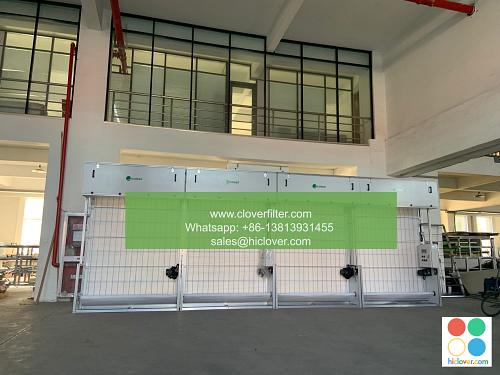The Impact of OSHA Regulations on Air Filter Certifications

The Occupational Safety and Health Administration (OSHA) plays a crucial role in ensuring the safety and health of workers in various industries. One of the key areas of focus for OSHA is the certification of air filters, which is essential for maintaining good indoor air quality (IAQ) and preventing airborne diseases. In this article, we will discuss the impact of OSHA regulations on air filter certifications, highlighting various application areas, including industrial hygiene, heating, ventilation, and air conditioning (HVAC) systems, and cleanroom technology.
Introduction to OSHA Regulations
OSHA regulations are designed to protect workers from hazards in the workplace, including airborne contaminants. The agency sets standards for air filter certifications, which involve testing and evaluating the performance of air filters in removing particles, gases, and other pollutants from the air. The goal of these regulations is to ensure that air filters are effective in maintaining good IAQ, which is critical for preventing respiratory diseases, such as silicosis, asbestosis, and coal workers’ pneumoconiosis.
Air Filter Certification Standards
OSHA has established several air filter certification standards, including the ASHRAE 52.2 standard, which tests the performance of air filters in removing particles from the air. The standard evaluates the filter’s minimum efficiency reporting value (MERV) rating, which ranges from 1 to 20, with higher ratings indicating better filter performance. Another important standard is the ISO 16890 standard, which tests the filter’s performance in removing particles, gases, and other pollutants from the air.
Application Areas
Air filter certifications are essential in various application areas, including:
* Industrial hygiene: Air filters are used to remove airborne contaminants, such as dust, fumes, and gases, from industrial workplaces.
* HVAC systems: Air filters are used to maintain good IAQ in buildings, including offices, schools, and hospitals.
* Cleanroom technology: Air filters are used to maintain a sterile environment in cleanrooms, which are critical for manufacturing pharmaceuticals, medical devices, and other products.
* Aerospace and defense: Air filters are used to remove airborne contaminants from aircraft and other military vehicles.
Benefits of OSHA Regulations
The impact of OSHA regulations on air filter certifications has several benefits, including:
* Improved worker safety: OSHA regulations ensure that air filters are effective in removing airborne contaminants, which reduces the risk of respiratory diseases.
* Better IAQ: OSHA regulations promote the use of high-performance air filters, which maintains good IAQ and prevents airborne diseases.
* Increased productivity: OSHA regulations reduce the risk of worker illness and injury, which increases productivity and reduces costs.
* Compliance with regulations: OSHA regulations ensure that employers comply with air filter certification standards, which reduces the risk of fines and penalties.
Conclusion
In conclusion, OSHA regulations have a significant impact on air filter certifications, highlighting the importance of maintaining good IAQ and preventing airborne diseases. The application areas of air filter certifications, including industrial hygiene, HVAC systems, cleanroom technology, and aerospace and defense, demonstrate the critical role of air filters in various industries. By understanding the benefits of OSHA regulations, employers can ensure a safe and healthy work environment, which is essential for productivity, compliance, and worker well-being. You haven’t provided a prompt or question for me to respond to. Please provide more context or information so I can assist you. What would you like to talk about or ask?

